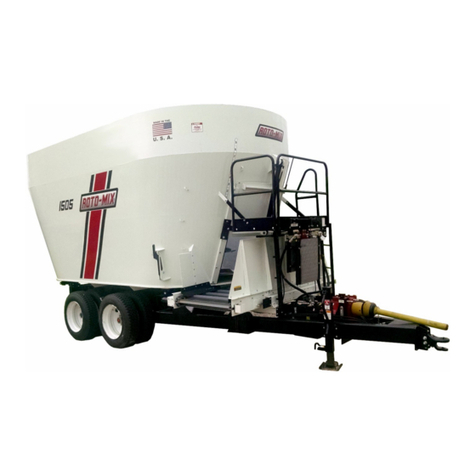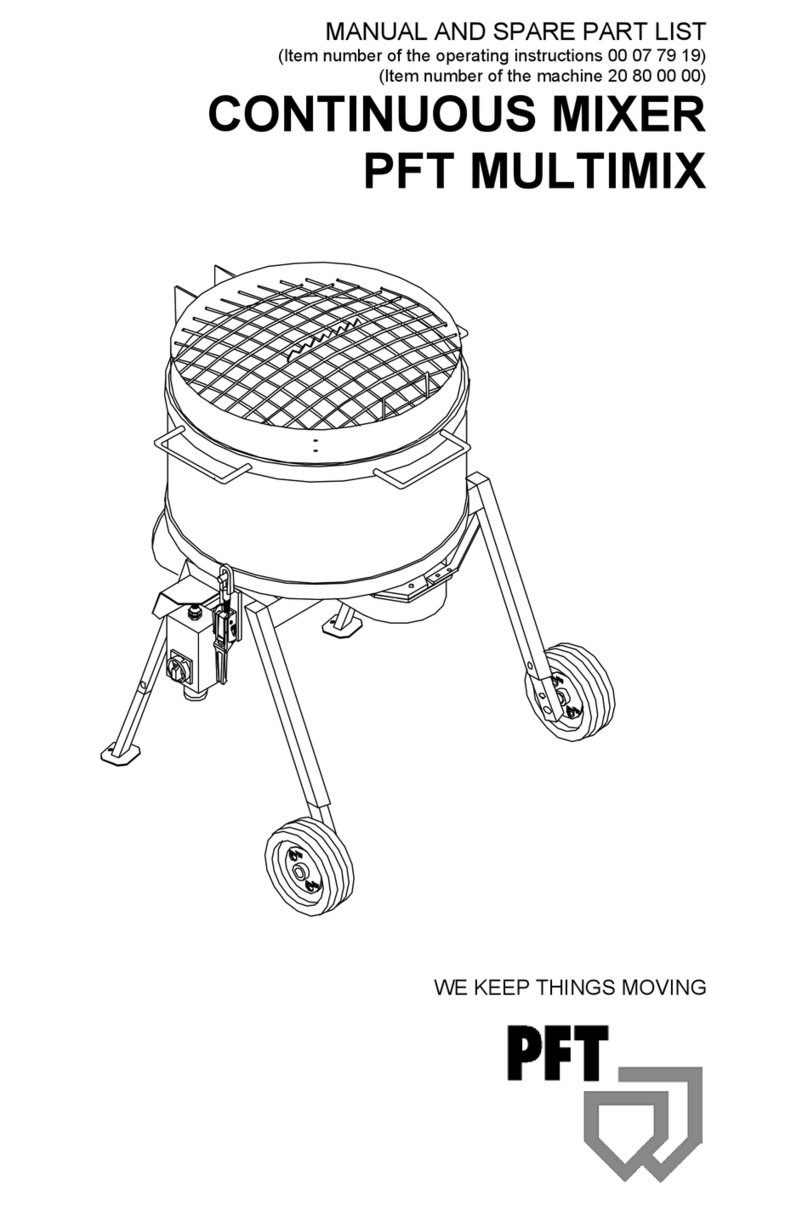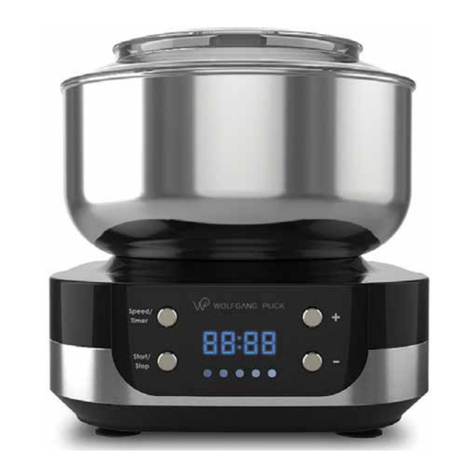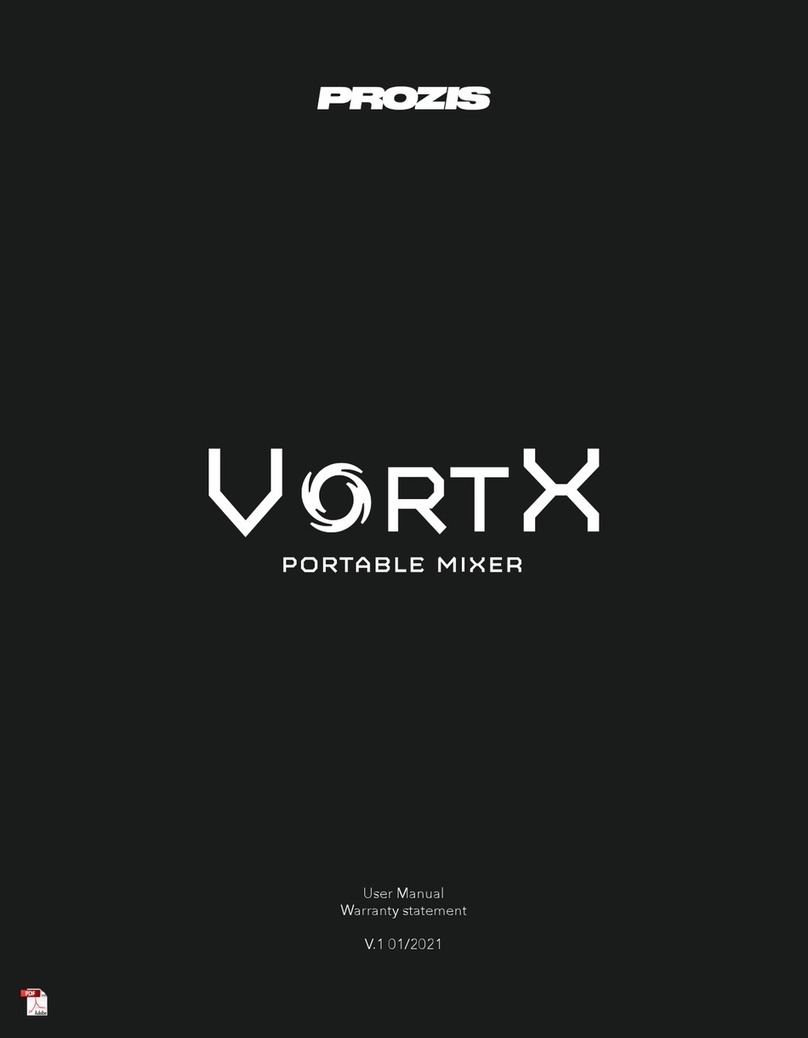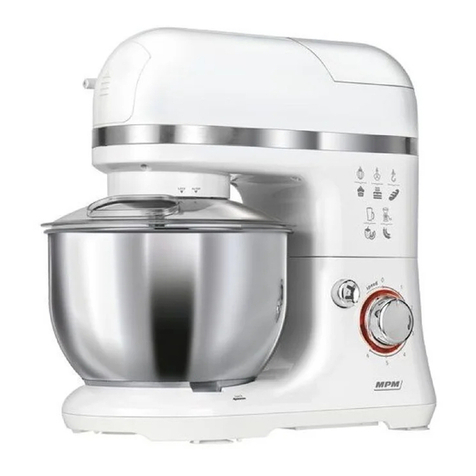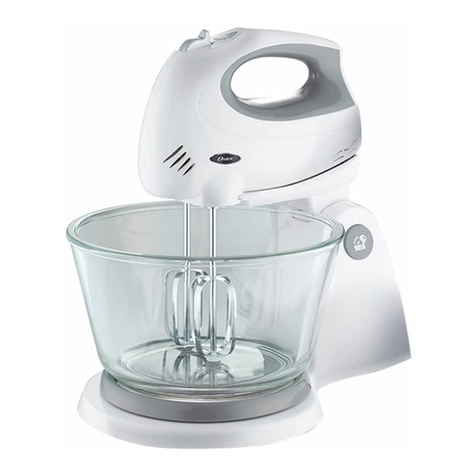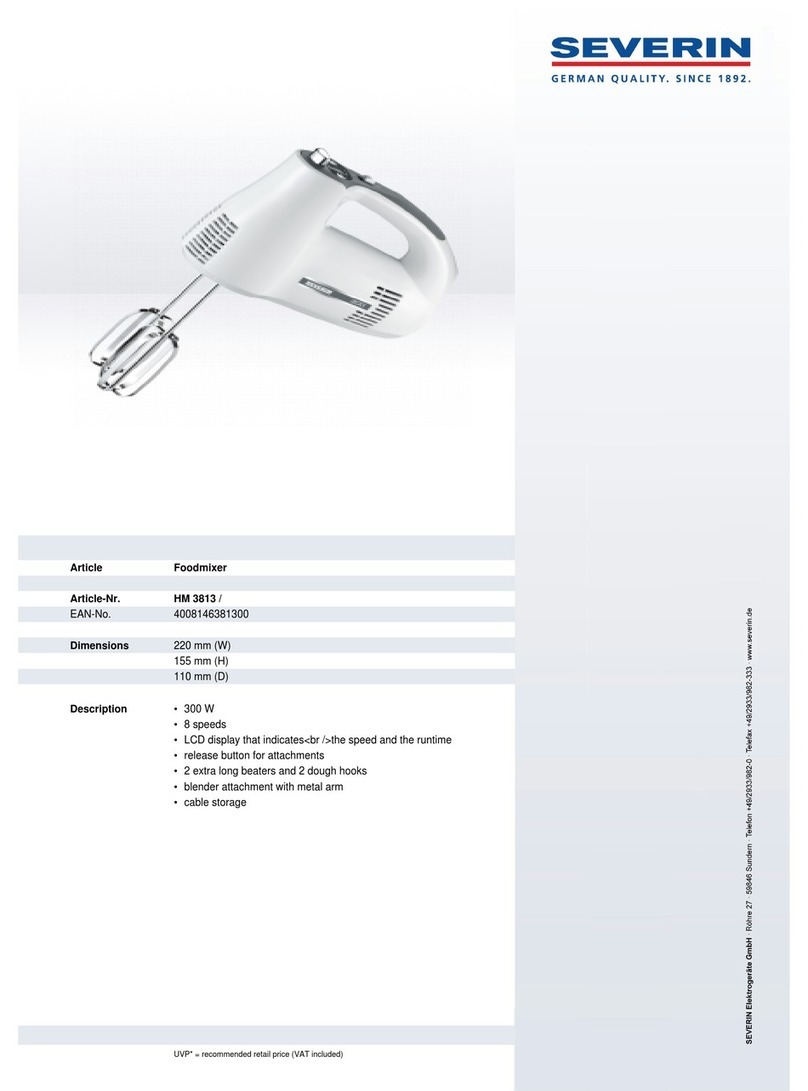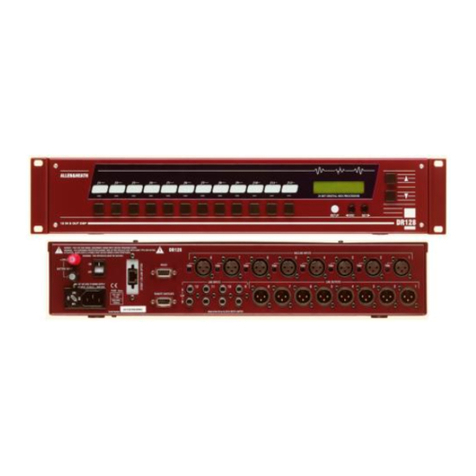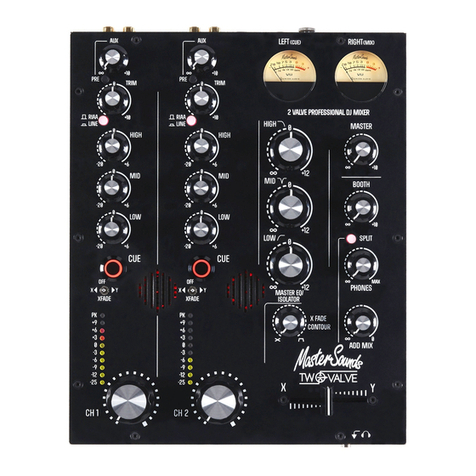FM Mattsson 9000 Series User manual

Operating instructions
The left knob controls the water flow rate. The right knob
controls the water temperature. Turned clockwise the mixer
will provide cold water. The more it is turned anti-clockwise
the warmer water is supplied. After one complete turn, the
override button must be pressed in order to obtain warmer
water. The knob can be turned another 1/2 turn after releasing
this safety device. The delivered water will then be
warmer than normally needed for bath or shower.
The mixer is also available with temperature knob without
override button (for limited temperature regulation) and with
a cover instead of a knob (for fixed temperature setting).
Changing over to the shower outlet
(Tub mixers)
When the valve is opened, the water is supplied through the
spout. If instead water from the shower is desired, the diverter
button is pulled upwards. When the valve is shut off, the diver-
ter automatically resets to spout flow. Tub mixer FMM 9203
is not equipped with a connection for shower.
The temperature is regulated in the mixer by a temperature
control and pressure balanced interplay. The pressure balan-
cing piston, operating inside the regulating shuttle, is first
handling the cold and hot water. The piston continuously
finds the position where cold and hot water gets equal pres-
sures when entering the temperature regulating function.
The position of the regulating shuttle is controlled by the
temperature knob, or by the spindle for fixed temperature
setting. The sensor element is located between the shuttle
and the knob and compensates for the temperature fluc-
tuations of entering cold and hot water from the supply.
The outgoing mixed water is delivered with an even, stable
temperature.
Warmer
Temperature
control knob
Override button
Diverter button
Closing and flow control knob
Temperature knob
Sensor element
Regulating shuttle
Hot water
Pressure balancing
piston
Tested and approved by FM Mattsson.
Every mixing valve is tested and approved.
The mixing valves are subjected to the following test:
- Tightness test with open and closed flow control.
- Tightness test of hot and cold water seat.
- Fail safe test.
- Cold water pressure 100 kPa > hot water pressure – Checking the mixed water temperature.
- Hot water pressure 100 kPa > cold water pressure – Checking the mixed water temperature.
Thermostatic/Pressure balanced mixer
9000-series
Colder
Cold water
English
Rev. 001 – 09.11
Function
TMV 2 with
Requirements TMV 2
TMV 3 with
NHS Requirements.
1000237

Installation
Requirements
It is not necessary to attach filters, check-valves, pressure or
thermostatic balancing devises as these functions are integrated
in the mixer.
Stop valves can be installed on the supply connections before the
mixer to simplify service or if it is demanded by domestic codes.
Hand-shower holder
A hand-shower holder is available for the mixer. It is attached to
the outlet, between the mixer and the hose.
Rinse the supply pipework!
Flush the supply pipework before attaching the mixer eliminates
the risk of filter clogging from unwanted impurities from the
pipes.
Connection
Make sure that the connections are tight.
With the temperature knob turned to the stop position, (without
pressing the override button) the water temperature delivered
should be just right for shower and bath. (appr. 36-38°C). The
mixers are delivered, calibrated to provide this temperature with
a hot water at 60-65°C and a cold water temperature at 10-15°C.
If the provided water is too hot or too cold with the temperature
knob in the stop position, with the override button unpressed, a
recalibration is necessary. The procedure is as follows:
- Open the valve with the flow control and set the temperature,
to the stop (unreleased override button position) desired level. It
may be necessary to press the override button. Close the water
flow: (It is not necessary to shut off the main supply.)
- Remove the centre cap with a screwdriver. Dismount the screw,
and pull the knob straight out without moving the desired setting.
Guidance ring
Override button
(No overrride button
on TMV3)
Hand-shower holder
Safety regulations
Shower outlet
Hose
Centre cap
Injurious risk! Never remove the guidance ring, (inside the temperature knob) it is a
protection against too hot water.
Injurious risk! Never calibrate the mixer with a too low temperature on hot water inlet.
If the hot water temperature later is increased, the mixed water temperature
will follow, and a recalibration will be necessary.
Injurious risk! If the temperature knob is turned past the stop, (after pressing the override
button) the provided mixed water temperature is higher than what
normally is required for a shower or bath.
Injurious risk! Never unscrew a connection on the mixer without having shut off the main
supply stop valve.
Calibration
Checking the delivered water temperature
- Replace the knob, now with the override button uppermost.
Fit the lug inside the knob to the right of the guidance ring
stop. See illustration.
- Reassemble and tighten the screw, attach the centre cap.
- Check the delivered water temperature.
Note that the temperature, with the knob in it´s upper stop
position, must not exceed 46°C.
For mixers installed in any UK National Health Service Installation (TMV 3), see enclosed NHS
Requirements.
Please note that these mixing valves are not equipped with knob with override button, but are set to the
desired maximum temperature.
If the tub outlet does not provide the correct temperature, the mixer needs to be recalibrated on the
shower outlet, with a following check of the tub outlet.

Function defect remedy
In order to guarantee the mixer´s function, the connected water
pressures and temperatures must meet the range within the given
limits in Technical Data.
If installed in low pressure systems, make sure that the pressures
are higher than 50 kPa.
If the mixing valve does not deliver sufficient amount of water or
if the temperature regulation or tempera- ture stability is distur-
bed, start by cleaning the filters.
If this action is not effective replace the regulation cartridge.
Cleaning the filters
150 c/c mixing valves
- Close the main supply valve and disconnect the mixer.
- The inlet filters are found in the connection nuts.
- Dismount the regulation cartridge, see ”Regulation cartridge
replacement”.
- Pull off the filters from the cartridge. To remove the large filter
the o-ring must first be dismounted.
- Clean all the filters (replace if necessary) and reassemble the
parts.
- Refit the inlet filters into the connection nipples.
- Refit the mixing valve and open the main supply valve.
- Adjust the temperature override limit, see ”Check-ing the
delivered water temperature”.
40 c/c mixing valves
Close the main supply valve before the inlet tubes are discon-
nected and removed to allow access to the inlet filters. They are
found in the inlet adapters. The T/P cartridge filters are acces-
sible just as described for 150 c/c models.
Regulation cartridge replacement
- Close the main supply valve.
- Remove the centre cap and screw on the temperature
knob. Pull the knob straight out.
- Mark the positioning of the guidance ring (in re-
lation to the body) and pull it off.
- Unscrew the T/P cartridge as follows: Press in the spindle
[A] and hold it firmly in place to prevent it from rotating.
Screw the nut [B] into place using FM Mattsson’s service
tool (Art.nr. 6077-0000) (see illustration).
40 c/c mixing valves
Filter (coarse)
Screw
Temperature
knob
Check valve
Connection nut
Spindle
Guidance ring
Check valve replacement
150 c/c mixing valves
- Close the main supply valve and disconnect the mixer.
- Unscrew the connection nipples. NOTE! The nipples are
left hand threaded.
- Pull out the check valve from the connection nipple.
- Insert the new check valve into the connection
nipple and refit the parts.
- Refit the mixing valve and open the main supply valve.
40 c/c mixing valves
The check valves are placed in the inlet connectors. It is not
necessary to dismount the mixer, but close the main supply
valve before the inlet tubes are disconnected. Unscrew the
inlet connectors with a 10 mm hex socket wrench and re-
place the check valves. Insert the new check valves with the
seat and the o-rings inwards to the connector. Reassemble
all parts and open the main supply valve.
Check
valve
Filter
Centre cap
- Dismount the regulation cartridge and install the new
one in reverse order.
- Open the main supply valve and set the override tempera-
ture limit, see ”Checking the delivered water temperature”.
Dismounting and attaching
the T/P cartridge head piece.
T/P cartridge with spindle
6077-0000
[A]
[B]
Regulation
cartridge
T/P cartridge

Shower - Spout diverter
If malfunction occurs in the
spout-shower diverter, it most
likely needs cleaning or
replacement.
- Disconnect the hose from the
mixer.
- Unscrew the diverter button.
Carefully secure the interior
piston of the diverter cartridge
from below with a screwdriver.
- Unscrew the cartridge down-
wards (12 mm hexagon key).
- Clean or replace the diverter
cartridge, and reassemble in the
reversed order.
Packing (tap disc) replacement
The mixing valve is provided with only one packing. If the
valve drips, replace the packing immediately.
- Close the main supply valve.
- Remove the centre cap and screw on the left hand
knob. Pull the knob straight out.
- Dismount the flow control head.
- Replace the tap disc and refit the parts.
- Open the main supply valve.
Technical data
Specifications:
Cold water supply temperature 5-25°C.
Hot water supply temperature 50-80°C.
Water supply pressure 50-1000 kPa.
Recommended operating pressure 100-500 kPa.
Max. test pressure 1600 kPa.
Min. flow rate 4 lit./min.
Temperature difference between
hot water and mixed water Min. 10ºC.
Materials:
The mixer body in dezincification resistant (DR)
brass, chrome-plated or powder-coated. Knobs in
plastic, standard version chrome-plated.
Connections:
150-153 c/c mixers: Inlet internal G3/4.
Outlet external G1/2.
40 c/c mixers and concealed mixers:
Inlet and outlet external G1/2.
Regular inspection and maintenance
Check the mixer function at regular intervals, minimum once ev-
ery year. Make sure that the correct temperature is obtained from
the mixer. If it is equipped with a temperature knob, the regula-
tion function is tested by turning the knob towards cold and to-
wards hot. By sensoring the mixed water it is determined that the
water is becoming colder/hotter relative to the turning direction
of the knob. Also make sure that sufficient flow is supplied from
the mixer. If the mixer is not operating satisfactory see ”Function
defect remedy”.
Cleaning
The mixing valve finish is best preserved by regular cleaning
using a soft rag and soap solution, washing with pure water and
polishing with a dry rag. Do not ever use lime dissolvents, acidic
or grinding deter-gents. Use household vinegar to remove lime
spots and wash with water. The powder coated surfaces may not
be exposed to acetone or caustic solution.
Cleaning the aerator
Unscrew the aerator every now and then and clean the insert from
impurities. If the insert is affected by lime deposits, wash with
vinegar solution.
No aluminium chloride, hydrochloric acid or
phosphoric acid on chrome
The chrome plated surface on the mixers is not re- sistant to
aluminium chloride. Dark spots will arise. Aluminium chloride
is used against perspiration. When cleaning the tiles with hydro-
chloric acid, the mixers must be protected. Hydrochloric acid dis-
solves chromium. Phosphoric acid can be present in very concen-
trated detergents and damages the chromium surface layer.
Pressure drop
400
80
70
60
50
40
30
20
10
.01 .02 .03 .05 .07 .1 .2 .3 .4 .5 .7 1
l/s
Flow
1000
900
700
600
500
300
200
100
kPa
Shower outlet
Spout
Centre cap
Tap disc
Flow control head
www.fmmattsson.com
FM Mattsson, Box 480, SE-792 27 MORA, SWEDEN
Table of contents
Popular Mixer manuals by other brands

XTE Electronic
XTE Electronic AMA 3008 owner's manual
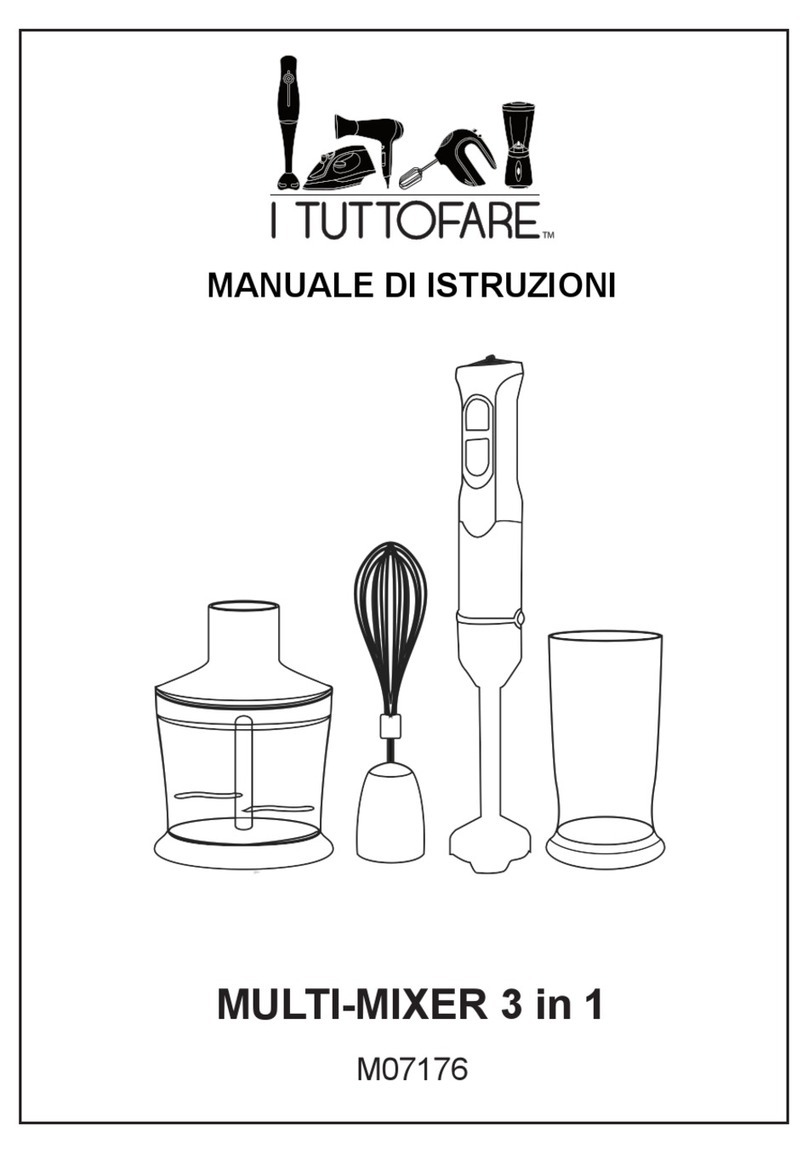
I TUTTOFARE
I TUTTOFARE M07176 manual

Pattfield Ergo Tools
Pattfield Ergo Tools Betonmischer 120 Liter Pattfield Translation of the original instructions
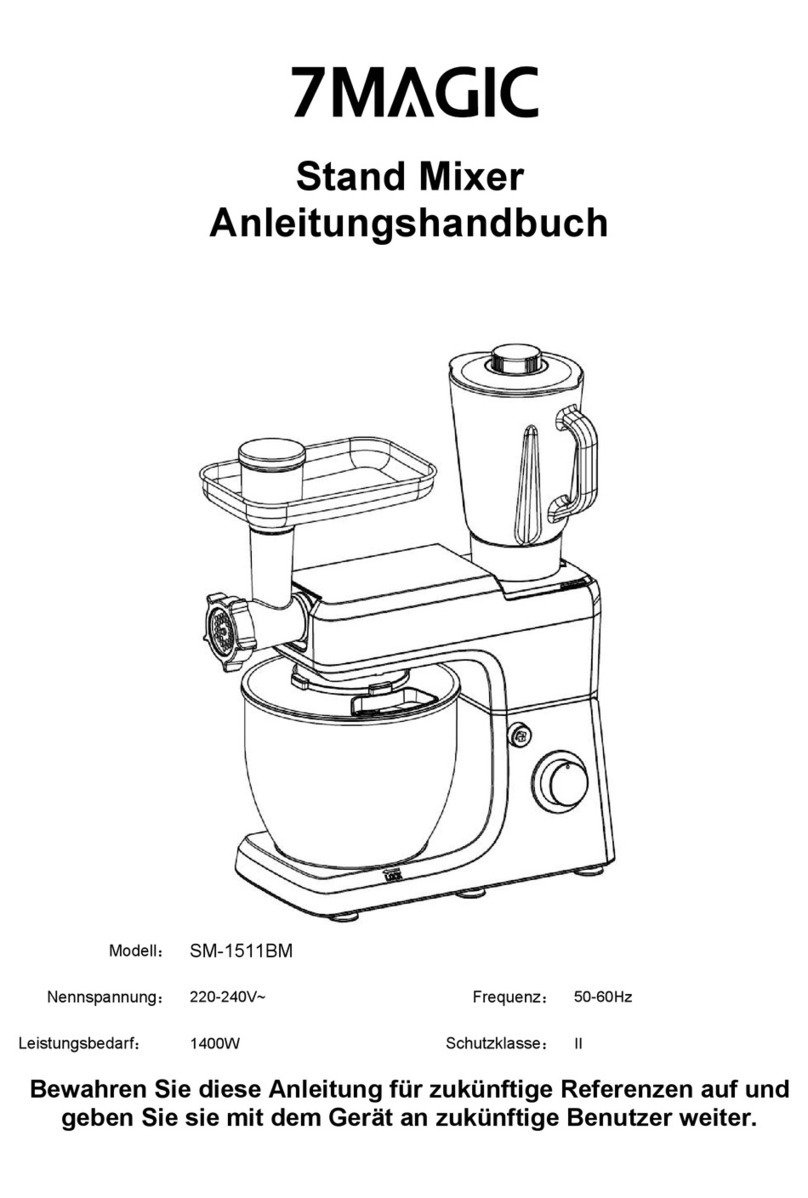
7MAGIC
7MAGIC SM-1511BM instruction manual
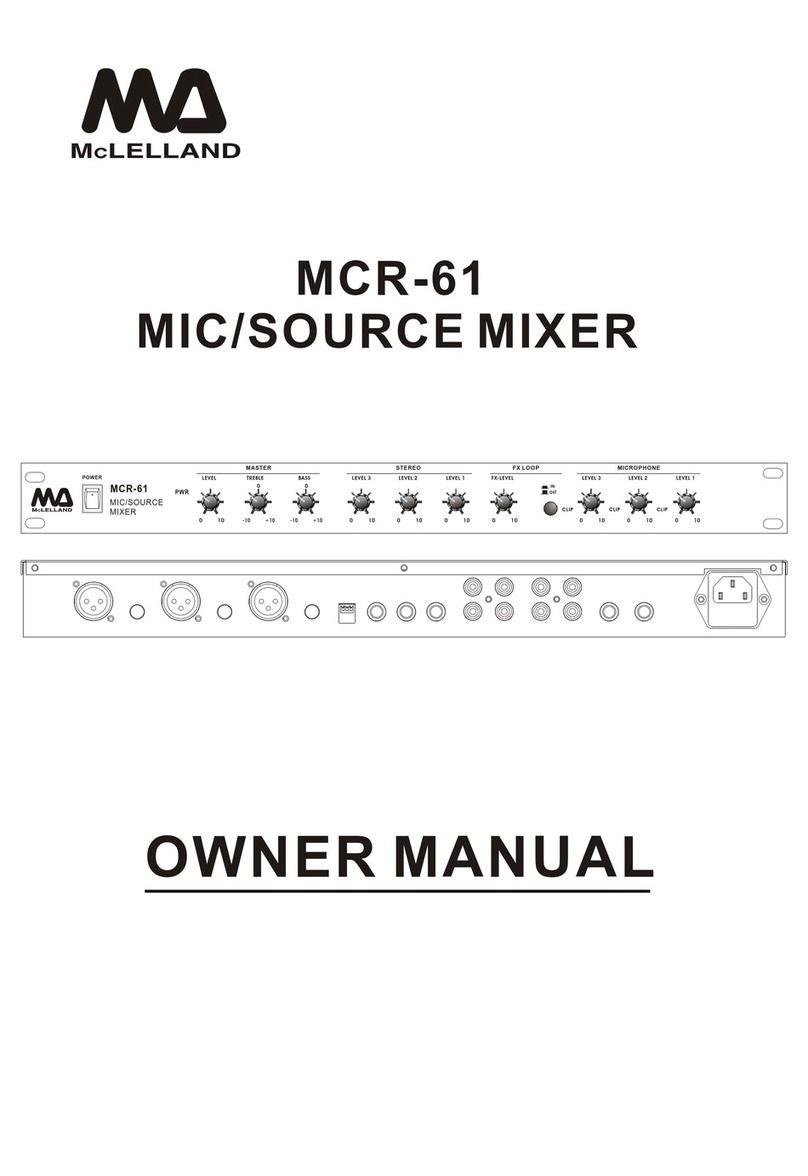
McLelland
McLelland MCR-61 owner's manual
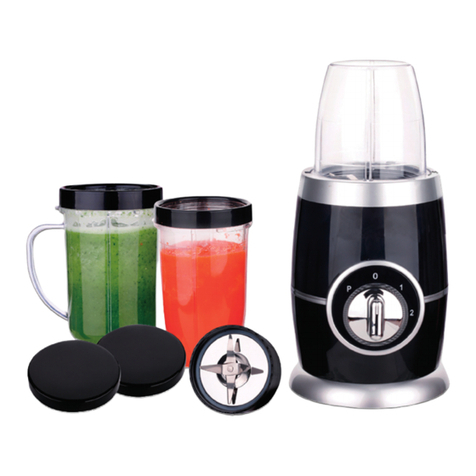
Klarstein
Klarstein 10027702 user manual
